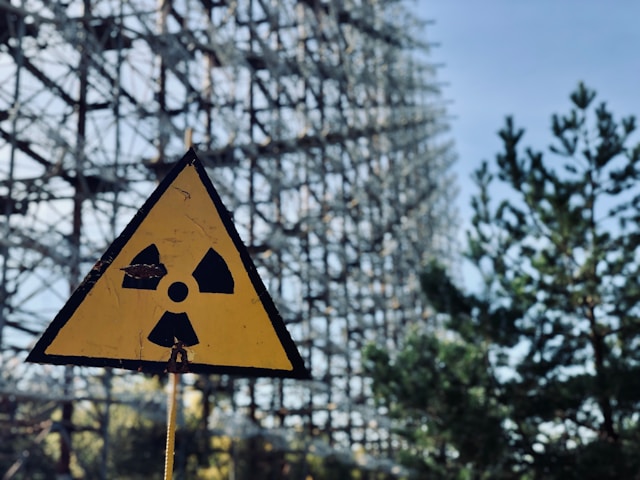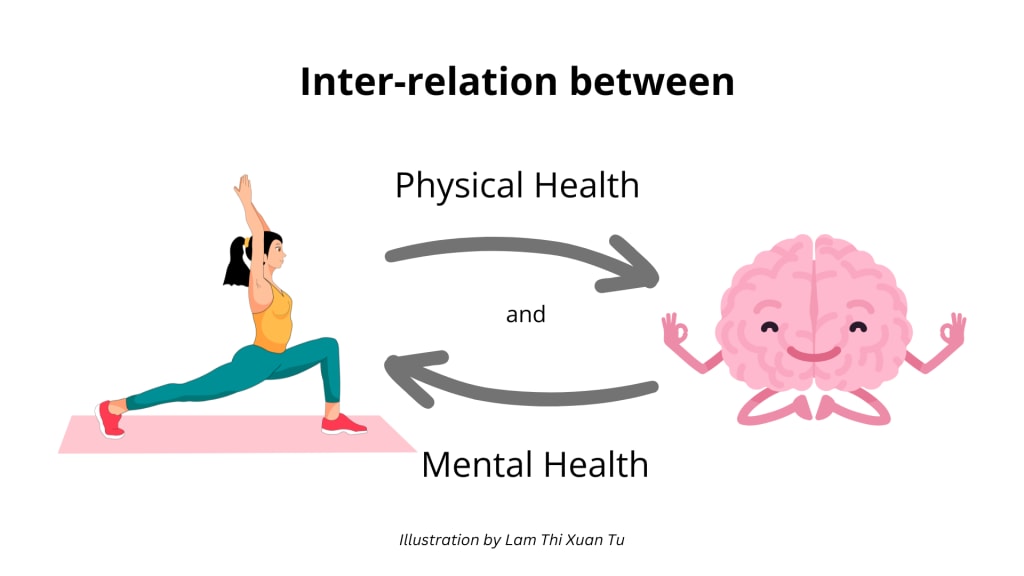In April 1986, the Chernobyl Nuclear Power Plant in Ukraine exploded, spilling radioactive particles into the environment. This disaster forced the evacuation of thousands of residents, leaving the area bare of human settlements. Surprisingly, in the absence of humans, animals began to reclaim the area, transforming the exclusion zone into an unanticipated habitat for various species. This phenomenon presents an intriguing question: how have these animals adapted to the constant radiation in their environment? Understanding these adaptations is critical because ionizing radiation is known to destroy organic molecules, potentially harming human and animal health. Studying the resilience and changes in Chernobyl's wildlife offers valuable insights into the long-term impacts of radiation exposure on living organisms.
Chernobyl: From Disaster to Wildlife Sanctuary.
The Explosion and Its Aftermath

On April 26, 1986, Reactor No. 4 at the Chernobyl Nuclear Power Plant near Pripyat, Ukraine, exploded during a late-night safety test. This catastrophic event released substantial radioactive materials into the environment, marking one of the most severe nuclear accidents in history.
In response, authorities established the Chernobyl Exclusion Zone (CEZ), a 30-kilometer radius around the plant, leading to the evacuation of approximately 116,000 residents. Due to high radiation levels, this zone was deemed uninhabitable, resulting in the abandonment of towns, villages, and agricultural lands.
Why Did Wildlife Return?
In the absence of human activity, the Chernobyl Exclusion Zone underwent a remarkable ecological transformation. Without the pressures of agriculture, industry, and urban development, wildlife began to reclaim the area. Researchers observed significant increases in populations of various species, including wolves, bison, lynxes, and numerous bird species.
For instance, studies in the Belarusian sector of the CEZ between 1987 and 1996 documented population explosions of boar, elk, and roe deer. By the mid-1990s, wolf populations had grown so substantially that they began to impact surrounding farmlands.
The resurgence of these species suggests that, despite the lingering radiation, the removal of human interference has allowed wildlife to thrive. This phenomenon highlights the resilience of nature and offers a unique opportunity to study how ecosystems adapt in post-human landscapes.
The Science of Radiation and Its Effects on Wildlife

Understanding Ionizing Radiation
-
How radiation exposure affects cells and DNA.
Ionizing radiation possesses sufficient energy to remove tightly bound electrons from atoms, leading to the formation of ions. When this type of radiation interacts with biological tissues, it can cause direct and indirect damage to cellular components, particularly DNA. Direct damage occurs when radiation breaks the DNA strands, leading to mutations, chromosomal aberrations, or cell death. Indirect damage arises when radiation ionizes water molecules within the cell, producing reactive oxygen species (ROS) that, in turn, damage DNA and other cellular structures (Turner, 2007).
-
Short-term vs. long-term biological effects on living organisms.
The biological effects of ionizing radiation can be categorized into short-term (acute) and long-term (chronic) effects:
1. Short-term Effects: High doses of radiation over a short period can result in acute radiation syndrome (ARS), characterized by symptoms such as nausea, fatigue, hair loss, and, in severe cases, organ failure or death. These effects are typically observed in scenarios involving significant radiation exposure, such as nuclear accidents.
2. Long-term Effects: Chronic exposure to lower radiation levels can lead to long-term health issues, including an increased risk of cancer due to accumulated genetic mutations. Additionally, prolonged exposure may cause genetic damage that can be passed to offspring, potentially leading to hereditary diseases (Baker et al., 1996).
Radiation Tolerance in Chernobyl's Animals

-
Do Animals in the CEZ Show Signs of Adaptation?
The Chernobyl Exclusion Zone (CEZ) offers a unique environment to study wildlife adaptation to chronic radiation exposure. Research indicates that some animal populations have developed mechanisms to cope with the radioactive environment. For instance, studies on wild dogs in the CEZ have identified genetic variations associated with radiation response and DNA repair, suggesting potential adaptive traits that enable survival in contaminated areas (Dillon et al., 2023).
-
Genetic Mutations vs. Natural Selection: What's Happening in Chernobyl?
The observed genetic changes in Chernobyl's wildlife raise questions about the roles of mutation and natural selection. While increased mutation rates due to radiation exposure can introduce genetic variability, natural selection may favor individuals with traits that confer radiation resistance. In the case of CEZ's wild dogs, the presence of specific genetic markers related to radiation response implies that natural selection may be promoting the prevalence of these advantageous traits over generations (Dillon et al., 2023).
-
Comparative Studies on Radiation Exposure in Animals vs. Humans
Comparative studies between animals and humans exposed to radiation provide insights into species-specific responses and adaptation mechanisms. Research on nematodes in the CEZ revealed no significant genomic changes or increased mutation rates associated with radiation exposure, suggesting species-specific resilience or effective DNA repair mechanisms (Tintori et al., 2023). In contrast, human studies have documented increased mutation rates and health issues following radiation exposure, highlighting differences in susceptibility and adaptive capacity between species.
Notable Adaptations Observed in Chernobyl's Wildlife
The Chernobyl Exclusion Zone (CEZ), established after the catastrophic 1986 nuclear disaster, has become an unintended sanctuary for wildlife. Despite the lingering radiation, various species have not only survived but also exhibited remarkable adaptations. These developments offer profound insights into the resilience of nature and the potential mechanisms of adaptation in radioactive environments.
Mammals

-
How Wolves and Other Large Predators Have Thrived
In the absence of human interference, the CEZ has witnessed a resurgence of large predators, notably the grey wolf (Canis lupus). Studies indicate that wolf populations in the zone are thriving, with densities comparable to those in uncontaminated reserves. This proliferation suggests that the benefits of reduced human activity may outweigh the detrimental effects of radiation for these apex predators. The abundance of prey and expansive territory likely contribute to their successful recolonization.
-
Behavioral Changes and Population Shifts
Beyond population growth, behavioral adaptations have been observed among mammals in the CEZ. For instance, some species exhibit altered foraging patterns and habitat use, potentially as strategies to mitigate radiation exposure. Additionally, studies on the free-roaming dog populations near the Chernobyl power plant have revealed genetic distinctions between groups residing in different areas of the zone. These differences may reflect adaptations to varying radiation levels and environmental conditions.
Birds
-
Research on Barn Swallows: Mutations, Feather Pigmentation, and Reproductive Success
Barn swallows (Hirundo rustica) in the CEZ have been subjects of extensive research due to observed physical abnormalities and genetic mutations. Notably, these birds exhibit a higher frequency of partial albinism and other plumage deformities compared to populations outside the zone. Such pigmentation changes are significant as they can affect mate selection and predator avoidance, thereby influencing reproductive success. Furthermore, studies have reported reduced annual survival rates and lower return rates among barn swallows in the CEZ, suggesting potential long-term population impacts.
Insects & Microorganisms
-
Radiation-Resistant Fungi: What Can We Learn from Them?
Among the most intriguing discoveries in the CEZ is the presence of melanized fungi that not only survive but seemingly thrive in high-radiation environments. These fungi contain melanin pigments that may enable them to harness ionizing radiation as an energy source, a phenomenon termed "radiotropism." This remarkable adaptation opens new avenues for research into bioremediation and the potential use of such organisms in managing radioactive waste.
-
Changes in Insect Populations and Biodiversity in the Zone
Invertebrate populations, including insects, experienced significant declines immediately following the Chernobyl disaster due to acute radiation exposure. However, over time, some insect populations have shown signs of recovery, although the extent varies among species. The current biodiversity and abundance of insects in the CEZ are influenced by a complex interplay of factors, including radiation levels, habitat quality, and ecological interactions. Ongoing studies aim to elucidate these dynamics and assess the long-term viability of insect communities in the area.
The adaptations observed in Chernobyl's wildlife underscore the resilience of nature in the face of environmental catastrophes. These findings not only enhance our understanding of ecological and evolutionary processes but also inform conservation strategies and the potential for ecosystem recovery in contaminated areas.
Lessons from Chernobyl's Wildlife: Implications for Science and Conservation
The Chernobyl Exclusion Zone (CEZ) has transformed into an unintended sanctuary, offering a rare lens into nature's resilience and adaptability in the face of nuclear catastrophe. The adaptations observed in its wildlife not only challenge our understanding of evolution but also present novel considerations for conservation strategies.
Insights into Evolution and Adaptation
-
Can species develop resistance to radiation over generations?
The enduring presence of diverse species within the CEZ suggests potential evolutionary responses to chronic radiation exposure. For instance, certain plant species have demonstrated increased DNA repair mechanisms, possibly as an adaptive response to the radioactive environment. Similarly, some bird populations have exhibited elevated antioxidant levels, which may mitigate radiation-induced oxidative stress. These observations imply that, over successive generations, natural selection may favor traits that confer enhanced survival in radioactive habitats.
-
Implications for space travel and human radiation exposure research
Studying these natural adaptations provides valuable insights into managing radiation exposure in humans. Understanding the genetic and physiological mechanisms that enable wildlife to endure high radiation levels could inform protective strategies for astronauts exposed to cosmic radiation and improve medical protocols for individuals undergoing radiotherapy. The CEZ thus serves as a living laboratory for exploring the boundaries of biological resilience.
Conservation and Rewilding Efforts
-
The paradox of the CEZ: A human-made disaster turned wildlife refuge
Ironically, the absence of human activity in the CEZ has fostered a resurgence of wildlife, transforming a site of devastation into a thriving ecosystem. This phenomenon underscores the profound impact of human presence on wildlife and highlights nature's capacity for recovery when left undisturbed.
-
Could abandoned zones worldwide become new sanctuaries for wildlife?
The success of the CEZ in supporting diverse species prompts consideration of other abandoned or underutilized areas as potential refuges for wildlife. While each site presents unique challenges, the CEZ exemplifies how reduced human interference can facilitate ecological restoration. This insight could inform future conservation and rewilding initiatives, emphasizing the potential of allowing nature to reclaim and rehabilitate degraded landscapes.
Conclusion
The Chernobyl Exclusion Zone stands as a testament to nature's resilience and adaptability in the aftermath of the nuclear disaster. The observed adaptations among its wildlife offer profound insights into evolutionary biology, highlighting the potential for species to develop mechanisms to withstand environmental stressors such as radiation. These findings have far-reaching implications, informing not only conservation strategies but also enhancing our understanding of radiation's impact on living organisms, which is crucial for fields ranging from medical treatments to space exploration.
As we reflect on the CEZ's transformation from a site of catastrophe to a thriving ecosystem, it prompts a reevaluation of human impact on the environment. The resurgence of wildlife in the absence of human activity underscores the delicate balance between human development and ecological preservation. Moving forward, the lessons gleaned from Chernobyl's wildlife should inspire more harmonious interactions with our environment, recognizing the inherent capacity of nature to recover and adapt when given the opportunity.
References:
Baker, R. J., Van Den Bussche, R. A., Wright, A. J., Wiggins, L. E., Hamilton, M. J., Reat, E. P., Smith, M. H., Lomakin, M. D., & Chesser, R. K. (1996). High levels of genetic change in rodents of Chernobyl. Nature, 380(6576), 707–708. https://doi.org/10.1038/380707a0
Dillon, L. M., Taylor, S. S., Mutafova, B., & Ostrander, E. A. (2023). Is increased mutation driving genetic diversity in dogs within the Chornobyl exclusion zone? Frontiers in Ecology and Evolution, 11, 11676578. https://doi.org/10.3389/fevo.2023.11676578
Tintori, S. C., Çelen, D., Ozturk, P., Coughlan, I., Mousseau, T. A., & Rockman, M. V. (2023). Environmental radiation exposure at Chornobyl has not systematically affected the genomes or chemical mutagen tolerance phenotypes of local worms. Proceedings of the National Academy of Sciences, 120(12), e2314793121. https://doi.org/10.1073/pnas.2314793121
Turner, J. E. (2007). Atoms, Radiation, and Radiation Protection (3rd ed.). Wiley-VCH.
share with

Mesha M. Founder
"Explore a world of inspiration and empowerment at RealtimeArticles. Dive into our curated articles for insights, reflection, and shared growth. Join our community on a journey of discovery and evolution!"







Comments
Coming Soon!
POST YOUR COMMENTS